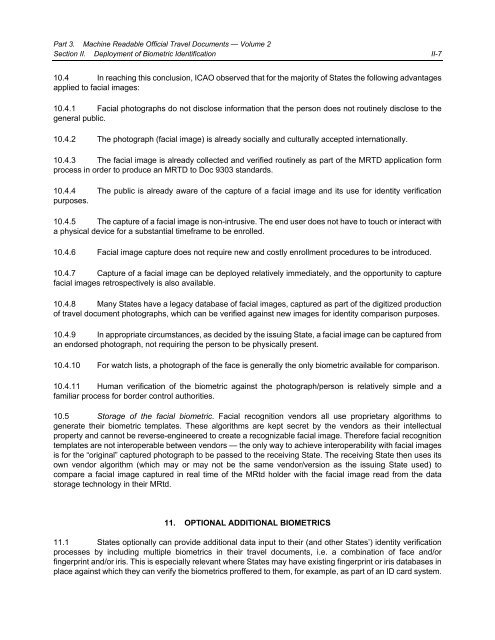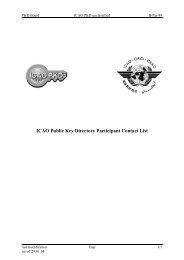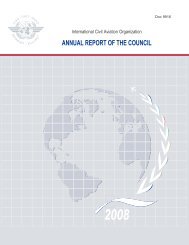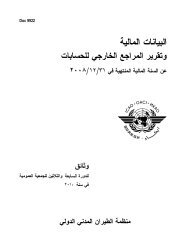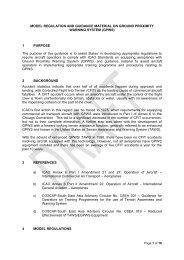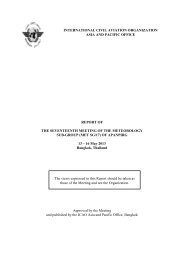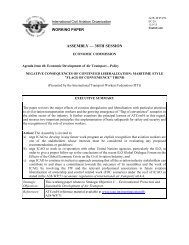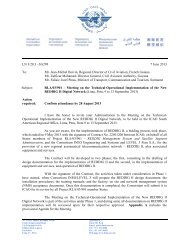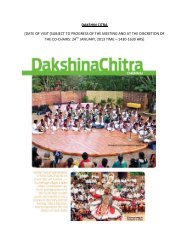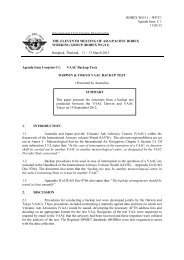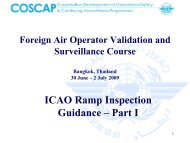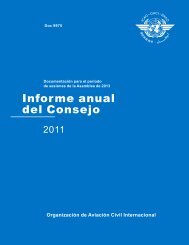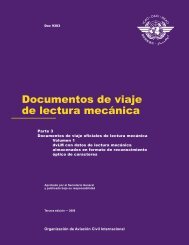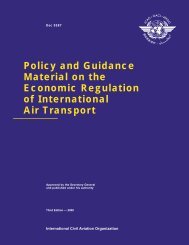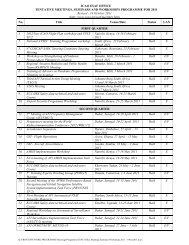Machine Readable Travel Documents - ICAO
Machine Readable Travel Documents - ICAO
Machine Readable Travel Documents - ICAO
Create successful ePaper yourself
Turn your PDF publications into a flip-book with our unique Google optimized e-Paper software.
Part 3. <strong>Machine</strong> <strong>Readable</strong> Official <strong>Travel</strong> <strong>Documents</strong> — Volume 2<br />
Section II. Deployment of Biometric Identification II-7<br />
10.4 In reaching this conclusion, <strong>ICAO</strong> observed that for the majority of States the following advantages<br />
applied to facial images:<br />
10.4.1 Facial photographs do not disclose information that the person does not routinely disclose to the<br />
general public.<br />
10.4.2 The photograph (facial image) is already socially and culturally accepted internationally.<br />
10.4.3 The facial image is already collected and verified routinely as part of the MRTD application form<br />
process in order to produce an MRTD to Doc 9303 standards.<br />
10.4.4 The public is already aware of the capture of a facial image and its use for identity verification<br />
purposes.<br />
10.4.5 The capture of a facial image is non-intrusive. The end user does not have to touch or interact with<br />
a physical device for a substantial timeframe to be enrolled.<br />
10.4.6 Facial image capture does not require new and costly enrollment procedures to be introduced.<br />
10.4.7 Capture of a facial image can be deployed relatively immediately, and the opportunity to capture<br />
facial images retrospectively is also available.<br />
10.4.8 Many States have a legacy database of facial images, captured as part of the digitized production<br />
of travel document photographs, which can be verified against new images for identity comparison purposes.<br />
10.4.9 In appropriate circumstances, as decided by the issuing State, a facial image can be captured from<br />
an endorsed photograph, not requiring the person to be physically present.<br />
10.4.10 For watch lists, a photograph of the face is generally the only biometric available for comparison.<br />
10.4.11 Human verification of the biometric against the photograph/person is relatively simple and a<br />
familiar process for border control authorities.<br />
10.5 Storage of the facial biometric. Facial recognition vendors all use proprietary algorithms to<br />
generate their biometric templates. These algorithms are kept secret by the vendors as their intellectual<br />
property and cannot be reverse-engineered to create a recognizable facial image. Therefore facial recognition<br />
templates are not interoperable between vendors — the only way to achieve interoperability with facial images<br />
is for the “original” captured photograph to be passed to the receiving State. The receiving State then uses its<br />
own vendor algorithm (which may or may not be the same vendor/version as the issuing State used) to<br />
compare a facial image captured in real time of the MRtd holder with the facial image read from the data<br />
storage technology in their MRtd.<br />
11. OPTIONAL ADDITIONAL BIOMETRICS<br />
11.1 States optionally can provide additional data input to their (and other States’) identity verification<br />
processes by including multiple biometrics in their travel documents, i.e. a combination of face and/or<br />
fingerprint and/or iris. This is especially relevant where States may have existing fingerprint or iris databases in<br />
place against which they can verify the biometrics proffered to them, for example, as part of an ID card system.


